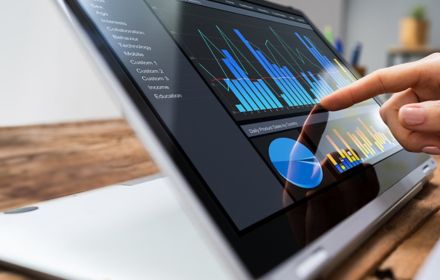The data age provides businesses with information for decisions at lightning speed. At the same time, they are looking for assurance about the interpretation of data. An audit gives them that. Often, an independent check of the figures provides more insights than companies realise. That story behind the figures – translated and told by KPMG people – adds value.
The value of an audit
Most companies need to provide (financial) accountability every year – to shareholders, banks, creditors, regulators and other stakeholders within the societal setting. The compulsory financial audit casts a critical eye over the functioning of important parts of the organisation.
Growth detracts from overall perspective
But however much companies value all that innovation and information, it also raises questions. Which is why the desire for a coherent story behind the data is growing. Now that computers are faster and better than ever, people feel less sure about the ‘computer’ between their ears. They don't want to make any mistakes. In that situation, help and confirmation in the form of critical and independent scrutiny are of great value. Initially, owners know exactly where the profitability of their firms lie. But as the company grows, that overall perspective disappears and you need to rely more and more on systems and processes.
People driven progress
Innovative data and analytics technology is very important in this regard. But a clear story behind the data is impossible without the knowledge of talented people. In KPMG’s view, technology only generates progress when harnessed to human insight and creativity: people driven progress.
The Digital Audit
By employing Data & Analytics, KPMG sets the audit quality bar high. This starts with the risk analysis, in which we analyse data by means of process mining technology. This gives our auditors direct insight into the client’s business processes, based purely on data. The processes are visually mapped in order to identify operational risks. This enables our auditors to ask targeted questions based on facts, which adds depth to the risk analysis. Our clients are very enthusiastic about this development, because it yields valuable information to further optimise processes and internal control.
Thanks to Data & Analytics technology, our auditors can concentrate on the parts of the audit associated with a higher risk, or which require human judgement. As a result, in many audits random sampling is a thing of the past.
KPMG is also investing in a Continuous Auditing platform. This platform enables us to carry out automated audit procedures several times per month, quarter or year without manual intervention. Which means we can regularly evaluate the controls and transactions in our client's systems. What about the client? The client obtains timely insight into transactions that deviate from the controlled process, so that they can react in time. Within the foreseeable future, this may even lead to Continuous Assurance: no longer working towards a single audit report at a single point in time but continuous assurance of processes and their outcomes.





